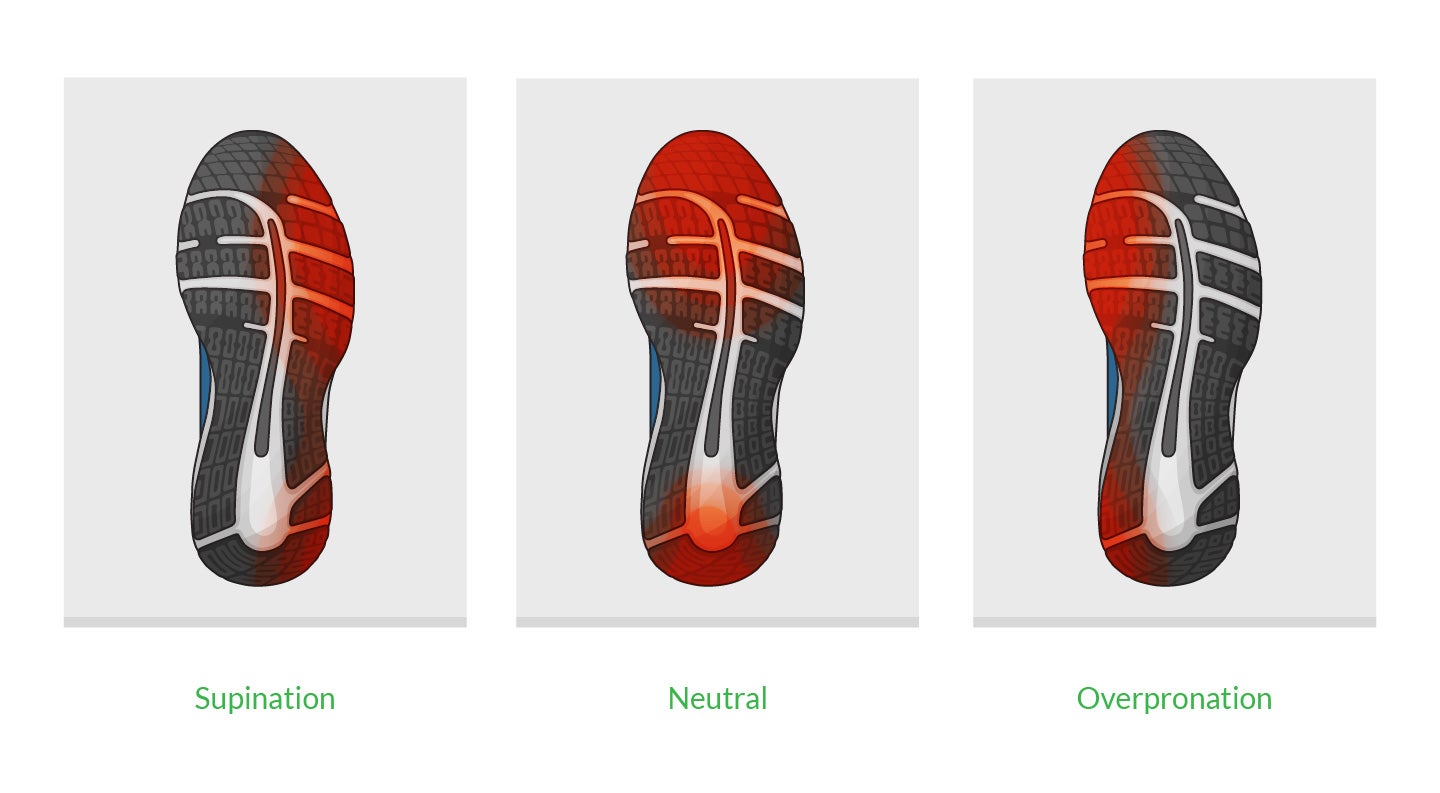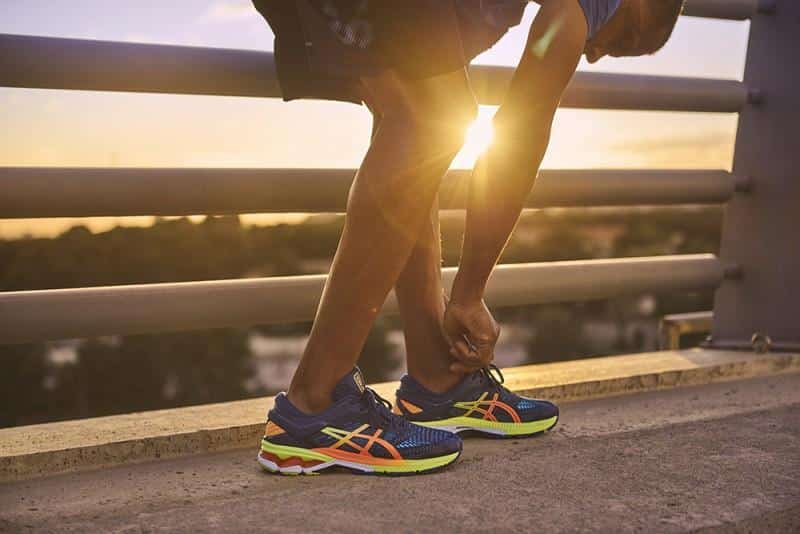Understanding Pronation and Flat Feet: A Brief Overview
Pronation refers to the natural inward rolling motion of the foot during a running or walking stride. However, excessive pronation, or overpronation, can lead to foot and leg discomfort or injury. Flat feet, or fallen arches, is a condition where the foot’s arch collapses, causing the entire sole to touch the ground while standing. Both pronation and flat feet can affect running biomechanics, making it essential to select the right running shoes to accommodate these conditions.
Identifying the Best Running Shoes for Pronation and Flat Feet: Key Factors
When searching for the best running shoes for pronation and flat feet, there are several crucial factors to consider. First, determine the shoe type that suits your running style and foot shape. Stability shoes are ideal for overpronators, while motion control shoes provide additional support for severe overpronation. Neutral shoes are suitable for those with high arches or minimal pronation. Cushioning is another essential factor, as it influences shock absorption and comfort. Lastly, consider the shoe’s stability features, such as medial posts, arch supports, and heel counters, which can help control pronation and provide extra support for flat feet.
Top Running Shoes for Pronation and Flat Feet: A Closer Look
Here is a curated list of the best running shoes for pronation and flat feet, showcasing their key features and benefits:
1. Brooks Adrenaline GTS 22
The Brooks Adrenaline GTS 22 offers excellent stability and cushioning for overpronators, with a GuideRails® system for targeted support and a DNA LOFT midsole for plush comfort.
2. ASICS Gel-Kayano 28
The ASICS Gel-Kayano 28 provides superior cushioning and motion control for flat-footed runners, featuring FlyteFoam® technology and a Dynamic DuoMax® support system for a smooth, stable ride.
3. New Balance 860v12
The New Balance 860v12 is a reliable stability shoe with a Fresh Foam midsole and a TruFuse™ footbed for cushioned support, perfect for runners with pronation and flat feet.
4. Saucony Guide 14
The Saucony Guide 14 offers a balance of stability and cushioning for mild to moderate overpronators, featuring PWRRUN™ foam and a medial TPU guidance frame for a smooth transition.
5. HOKA One One Arahi 5
The HOKA One One Arahi 5 provides a unique blend of cushioning and support for flat-footed runners, with a J-Frame™ design for stability and a PROFLY™ midsole for a responsive ride.
6. Mizuno Wave Inspire 17
The Mizuno Wave Inspire 17 offers stability and cushioning for overpronators, featuring a wave plate for shock absorption and a SmoothRide® engineering for a smooth transition.
How to Choose the Perfect Running Shoes for Pronation and Flat Feet
Selecting the ideal running shoes for pronation and flat feet involves careful consideration of individual running style, foot shape, and preferences. Follow this step-by-step guide to make the right choice:
- Assess your foot type: Identify whether you have flat feet, high arches, or neutral arches, as this will determine the type of shoe you need.
- Analyze your pronation: Determine if you overpronate, underpronate, or have a neutral pronation pattern, as this will influence the shoe’s stability features and support.
- Consider your running style: Think about your running frequency, distance, and terrain, as these factors will impact the shoe’s cushioning, durability, and traction requirements.
- Try on multiple options: Visit a specialty running store to try on various shoes, ensuring a proper fit and comfortable feel.
- <Consult expert opinions: Seek advice from running experts, coaches, or physical therapists to help narrow down your options and make an informed decision.
Remember, the best running shoes for pronation and flat feet are those that provide the right balance of support, cushioning, and comfort for your unique needs. By following this guide, you can find the perfect pair to enhance your running experience and reduce the risk of injury.
Expert Tips for Runners with Pronation and Flat Feet
Expert advice and practical tips can significantly enhance the running experience for those with pronation and flat feet. Here are some valuable recommendations:
- Proper running form: Focus on maintaining a midfoot strike, keeping your body aligned, and engaging your core muscles to improve biomechanical efficiency and reduce injury risk.
- Stretching and strengthening exercises: Incorporate exercises that target the feet, ankles, and lower leg muscles to improve flexibility, strength, and balance. Examples include arch lifts, heel-to-toe walks, and resistance band exercises.
- Cross-training activities: Engage in low-impact activities like swimming, cycling, or elliptical training to improve cardiovascular fitness and reduce the stress on your feet and legs.
- Gradual transition: When switching to new running shoes, allow your body time to adapt by gradually increasing your mileage and intensity over several weeks.
- Orthotics and insoles: Consult a healthcare professional to determine if custom orthotics or over-the-counter insoles could benefit your running performance and comfort.
By following these expert tips, runners with pronation and flat feet can optimize their running experience, minimize discomfort, and reduce the risk of injury.
Maintaining Your Running Shoes: Tips for Longevity
Proper care and maintenance can significantly extend the lifespan of your running shoes, ensuring they continue to provide the necessary support and cushioning for your pronation and flat feet. Here are some essential tips for maintaining your running shoes:
- Cleaning: Remove dirt and debris from your shoes after each run using a soft brush or cloth. For a deeper clean, use a mild detergent and warm water, gently scrubbing the shoe’s exterior. Avoid placing your shoes in the washing machine, as this can damage the materials and cause premature wear.
- Drying: Allow your shoes to air dry naturally, away from direct heat sources like radiators or hairdryers. Stuffing them with newspaper can help absorb excess moisture and speed up the drying process.
- Storing: Store your running shoes in a cool, dry place away from direct sunlight. Avoid stacking heavy objects on top of your shoes, as this can cause them to lose their shape and compromise their support.
- Rotating: Alternate between two pairs of running shoes to allow them to recover and prolong their lifespan. This practice also helps reduce the risk of injury by varying the shoe’s cushioning and support characteristics.
- Replacing: Replace your running shoes every 300 to 500 miles, depending on your running frequency, weight, and running surface. Monitor your shoes for signs of wear, such as reduced cushioning, worn-out treads, or compromised structural integrity, and consider replacing them when necessary.
By following these maintenance tips, you can ensure your best running shoes for pronation and flat feet remain in optimal condition, providing the support and cushioning you need for a comfortable and safe running experience.
Staying Up-to-Date with the Latest Running Shoe Trends
The world of running shoes is constantly evolving, with new technologies and materials designed to improve comfort, support, and performance for runners with pronation and flat feet. Here are some of the latest trends and innovations in running shoes tailored for these conditions:
- Advanced cushioning systems: Modern running shoes feature innovative cushioning systems that adapt to your foot’s unique biomechanics, providing personalized support and shock absorption for pronation and flat feet.
- Customizable stability features: Some running shoe brands now offer customizable stability features, allowing runners to fine-tune the level of support and control based on their individual needs and preferences.
- Lightweight materials: Running shoe manufacturers are increasingly using lightweight materials that maintain durability and support without adding unnecessary weight, enhancing comfort and performance.
- Integrated sensors and apps: The latest running shoes incorporate smart technology, such as built-in sensors and companion apps, that provide real-time data on running metrics, gait analysis, and personalized coaching, helping runners with pronation and flat feet optimize their form and performance.
- Eco-friendly materials and manufacturing: Many running shoe brands are now focusing on sustainability, using recycled and biodegradable materials and implementing eco-friendly manufacturing processes to minimize their environmental impact.
Staying informed about these trends and innovations can help runners with pronation and flat feet make more informed decisions when selecting the best running shoes for their needs. By choosing shoes that incorporate these features, runners can enjoy a more comfortable, supportive, and enjoyable running experience.
Frequently Asked Questions about Running Shoes for Pronation and Flat Feet
This section addresses common questions and concerns about running shoes for pronation and flat feet, offering valuable insights for runners seeking the best footwear for their needs.
1. How often should I replace my running shoes if I have pronation and flat feet?
It is generally recommended to replace running shoes every 300 to 500 miles, depending on the shoe’s construction, your weight, and running surface. For runners with pronation and flat feet, monitor your shoes for signs of wear, such as reduced cushioning or compromised structural integrity, and consider replacing them when necessary.
2. How do I transition to new running shoes with pronation and flat feet?
When transitioning to new running shoes, gradually increase your mileage and intensity over several weeks. This approach allows your body to adapt to the shoe’s new cushioning, support, and biomechanical characteristics, reducing the risk of injury and discomfort.
3. Should I use orthotics with my running shoes if I have flat feet?
Orthotics can be beneficial for runners with flat feet, providing additional arch support and alignment guidance. Consult a healthcare professional to determine if custom orthotics or over-the-counter insoles are appropriate for your specific needs.
4. How can I improve my running form if I have pronation and flat feet?
Focus on maintaining a midfoot strike, keeping your body aligned, and engaging your core muscles to improve biomechanical efficiency and reduce injury risk. Consider working with a running coach or physical therapist to optimize your running form and address any specific concerns related to pronation and flat feet.
5. Are there any specific stretching or strengthening exercises for runners with pronation and flat feet?
Yes, exercises targeting the feet, ankles, and lower leg muscles can improve flexibility, strength, and balance for runners with pronation and flat feet. Examples include arch lifts, heel-to-toe walks, and resistance band exercises. Consult a healthcare professional or fitness expert for personalized recommendations and guidance.







